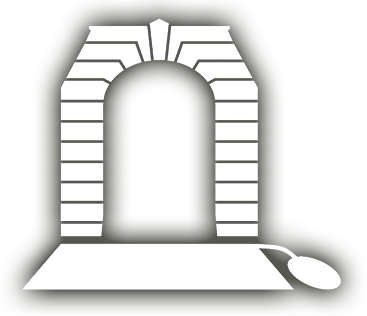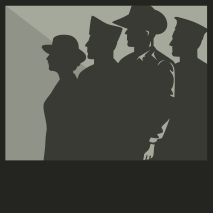
CRUICKSHANK, George
| Service Number: | 709 |
|---|---|
| Enlisted: | 24 August 1914, Sydney, NSW |
| Last Rank: | Lance Corporal |
| Last Unit: | 1st Divisional Signal Company |
| Born: | Hamilton, Victoria, Australia, 9 July 1887 |
| Home Town: | Hamilton, Southern Grampians, Victoria |
| Schooling: | Hamilton State School, Victoria, Australia |
| Occupation: | Telegraph Operator |
| Died: | Killed in action, Belgium, 29 October 1917, aged 30 years |
| Cemetery: |
Perth Cemetery (China Wall), Ypres V K 11, |
| Memorials: | Australian War Memorial Roll of Honour, Cavendish Bulart District Pictorial Honor Roll |
World War 1 Service
| 24 Aug 1914: | Enlisted AIF WW1, Private, 709, 3rd Infantry Battalion, Sydney, NSW | |
|---|---|---|
| 20 Oct 1914: | Involvement Private, 709, 3rd Infantry Battalion, --- :embarkation_roll: roll_number: '7' embarkation_place: Sydney embarkation_ship: HMAT Euripides embarkation_ship_number: A14 public_note: '' | |
| 20 Oct 1914: | Embarked Private, 709, 3rd Infantry Battalion, HMAT Euripides, Sydney | |
| 10 Nov 1915: | Transferred AIF WW1, Private, 1st Divisional Signal Company | |
| 20 Oct 1917: | Promoted AIF WW1, Lance Corporal, 1st Divisional Signal Company | |
| 20 Nov 1917: | Honoured Military Medal |
Help us honour George Cruickshank's service by contributing information, stories, and images so that they can be preserved for future generations.
Add my storyBiography contributed by Faithe Jones
Son of Thomas Brown Cruickshank and Susan Cruickshank, of Cavendish, Victoria, Australia.
HEAVENLY FATHER IN THY KEEPING WE LEAVE OUR DEAR ONE SLEEPING
Military Medal
'At REMUS WOOD east of YPRES during the operation of October 4th, 1917 on the PASSCHENDAELE-GHELUVELT RIDGE, Spr. CRUIKSHANK as telegraphist at Cable Head displayed conspicuous gallantry and devotion to duty. On three separate occasions when the line that he was working was broken by shell fire he went out under heavy shell fire across swampy country and effected repairs to this line at a most important juncture of the battle. He remained continuously on duty for 48 hours and it was chiefly due to his efforts that telegraphic communication was maintained between Cable Head and Brigade Forward Station.'
Source: 'Commonwealth Gazette' No. 95
Date: 27 June 1918
Biography contributed by Stephen Brooks
George attended Hamilton State School before starting work at the Hamilton Post Office. In 1914, George passed his final examination as a telegraphist in the Commonwealth Postal Service and received an appointment as a postal assistant at Tumut, New South Wales. George was one of the very early volunteers during August 1914 and he enlisted with the 3rd Battalion. George served on Gallipoli from the Landing until 15 August 1915 when he was shot in the arm and evacuated to Egypt. George returned to Gallipoli during October 1915 and soon after transferred to the 1st Australian Division Signals Company.
At the start of October 1917, the 1st Australian Division Signals Company was located at Remus Wood and George was acting as a telegraphist. Shells damaged the lines three times during important moments of the battle. Each time George faced heavy shelling crossing swamps to repair the lines. He also remained on duty for 48 hours and his efforts ensured telegraphic communication was maintained between the Cable Head and the Brigade Forward Station. He was awarded a Military Medal. Soon after, George Cruickshank was killed by a shell.
In January 1918, the Cruickshanks received a letter from Lieutenant P.H.Neal written in early November 1917.
“Your son George was killed by a shell a couple of days ago (4/11/17). Fortunately, death was instantaneous. We buried him where he fell, and I am getting a suitable cross made. All the boys feel his loss very keenly, and I have lost one of my best men. I was a corporal when George first came to our company. I had recently marked him for rapid promotion, but unfortunately, fate willed otherwise. Today news came through that your son has been awarded the Military Medal for bravery in the field during the stunt on October 4. The medal will be forwarded to you by the military authorities in due course. Poor old George did not live to enjoy this honour, which he richly deserved. Sapper Bucknall is arranging to send all his personal effects. My sympathy goes out to you. Your loss is my loss, and it will be hard to find a man so brave and good as your son was.”
The Cruickshanks also heard from Henry Bucknall of Hamilton who started out as a telegraph boy at the Hamilton Post Office but who was also a member of the 1st Division Signals Company:
“We were together for two and a half years. Our one regret was that through circumstance over which we had no control it was impossible to bring poor old “Crooky” far behind the line for burial. He was buried near where he fell, and a cross erected. I, feel his death very keenly, as he and I had been intimate friends for over ten years. One thing that pleases us is the fact that his services were appreciated by all, and he was liked by everyone. As a cool man under fire, I don’t think it possible to find his equal. As a friend I know he can never be replaced.”
His brother, 5570 Pte. Thomas William Cruickshank 28th Battalion AIF, died of wounds at Bullecourt, 3 May 1917, aged 24.










